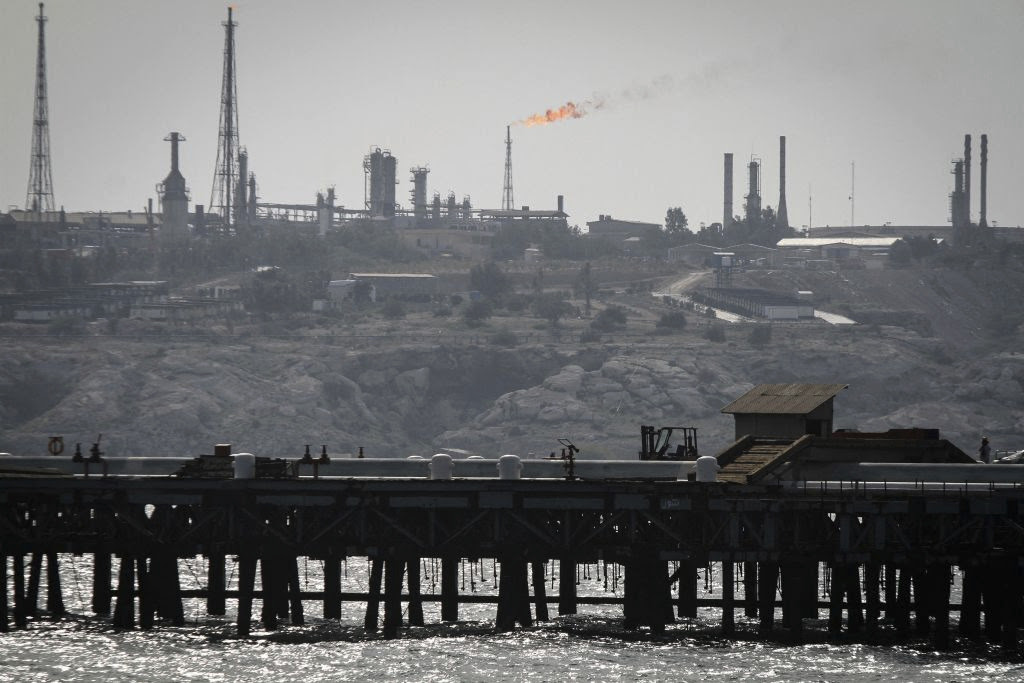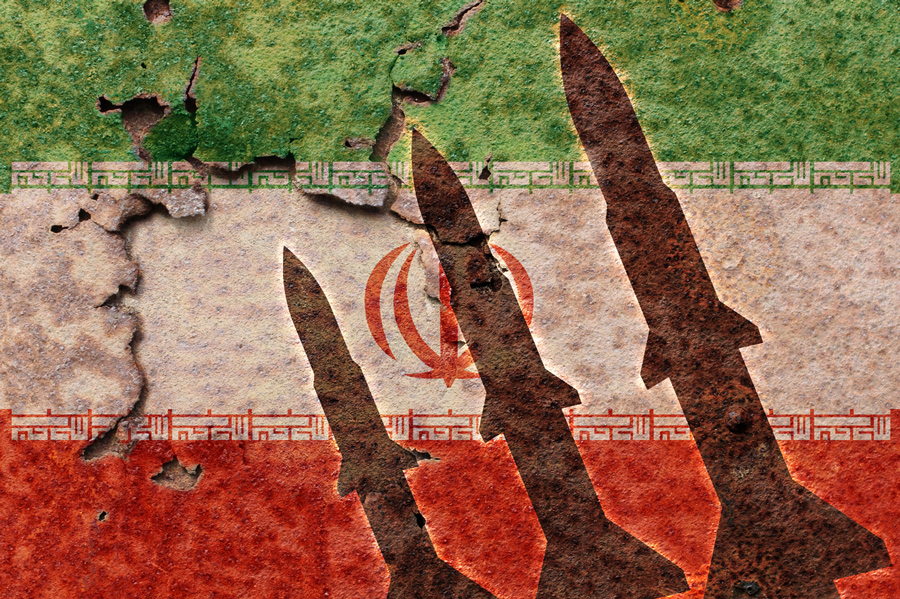Europe’s Muslim population is set to double — and possibly triple — between now and 2050, according to new projections by the Pew Research Center.
The projections, contained in a report, “Europe’s Growing Muslim Population,” confirm what has long been common knowledge: decades of declining European birthrates, coupled with mass migration from the Muslim world, are fast-tracking the Islamization of Europe.
The demographic calamity facing Europe, however, is even worse than the Pew report lets on. A critical analysis of the data shows that Pew’s calculations of the current Muslim population in key European countries are partial and incomplete — and in some instances inaccurate. As a result, Pew’s baseline estimate of the number of Muslims currently in Europe — the estimate upon which its future projections are calculated — has been undercounted by at least five million Muslims, whose presence in Europe will significantly increase the future size of the continent’s Muslim population.
The Pew report offers three projections based on three different scenarios involving migration during the next three decades. The baseline for all three scenarios is the Muslim population in Europe (defined by Pew as the 28 countries presently in the European Union, plus Norway and Switzerland), estimated at 25.8 million (4.9% of the overall population) as of mid-2016 — up from 19.5 million (3.8%) in 2010.
The first scenario envisions a complete halt to Muslim immigration between now and 2050. This scenario will not occur, of course, but was modeled to determine what the future might look like with migration removed from the equation.
In this scenario, Europe’s Muslim population is projected to increase by about 10 million people, from an estimated 25.8 million Muslims in 2016 to 35.8 million in 2050. In percentage terms, the Muslim population would rise from about 5% of Europe’s overall population today to 7.4% at midcentury — not only because Muslims are growing in absolute numbers, but because the non-Muslim population in Europe is expected to decline by roughly 10%.
A second, “medium” migration scenario assumes that all refugee flows will stop as of mid-2016 but that recent levels of “regular” migration to Europe will continue (that is, migration of those who come for reasons other than seeking asylum). This is the scenario most likely to occur, according to Pew. Under these conditions, the number of Muslims in Europe could reach 57.9 million, or 11.2% of Europe’s population in 2050.
Finally, a “high” migration scenario projects the record flow of refugees into Europe between 2014 and 2016 to continue indefinitely into the future with the same religious composition — namely Islamic — in addition to the typical annual flow of regular migrants. In this scenario, the number of Muslims could reach 75.6 million, or 14% of Europe’s population by 2050 — nearly triple the current share.
The impact of these scenarios on different European countries is astounding: Under the high-migration scenario, for instance, the Muslim population of Sweden — a formerly homogeneous Christian country — would reach nearly one-third (30.6%) of the overall population by 2050, followed by Cyprus (28.3%), Austria (19.9%), Germany (19.7%), Belgium (18.2%), France (18%), Norway (17%), Britain (16.7%), Denmark (16%), Netherlands (15.2%), Finland (15%) and Italy (14.1%).
The raw numbers are equally jarring:
- In Germany, the Muslim population would increase from 4,950,000 (6%) today to 17,490,000 (around 20%) by 2050 in the high scenario, compared to 11% in the medium scenario and 9% with no further Muslim migration.
- In France, the Muslim population would increase from 5,720,000 (8.8%) today to 13,210,000 (18%) by 2050 in the high scenario, compared with 17.4% in the medium scenario and 12.7% with no further Muslim migration.
- In Britain, the Muslim population would increase from 4,130,000 (6.3%) today to 13,480,000 (17.2%) in the high scenario, compared to 6.7% in the medium scenario and 9.7% with no further Muslim migration.
- In Belgium, the Muslim population would increase from 870,000 (7.6%) today to 2,580,000 (18.2%) in the high scenario, compared to 15.1% in the medium scenario and 11.1% with no further Muslim migration.
The report’s authors acknowledge that no one can know today what Europe’s Muslim population of Europe will be in 2050, but they claim to know, more or less, the size of Europe’s Muslim population today. In this aspect, some of Pew’s calculations — which are said to be based on “analysis and projections of the best available census and survey data in each country combined with data on immigration from Eurostat and other sources” — fall short.
In Spain, for instance, Pew estimates the current Muslim population at 1,180,000 or 2.6% of the overall population. The Union of Islamic Communities in Spain (Unión de Comunidades Islámicas de España, UCIDE), however, estimates that Spain’s Muslim population at the end of 2016 was 1,919,141, or 4.1% of the overall population.
The UCIDE figures — which posit that there are roughly 750,000 more Muslims in Spain today than the estimate proffered by Pew — are widely recognized in Spain as the most accurate assessment of the Muslim population in that country. It remains unclear why Pew failed to mention the UCIDE report in its source appendix.
The different estimates of the Muslim population in Spain today yield significantly different projections of Spain’s Muslim population in 2050. According to Pew, Spain’s Muslim population would increase from 1,180,000 (2.6%) today to 2,810,000 (7.2%) by 2050 in the high scenario, compared to 2,660,000 (6.8%) in the medium scenario and 1,880,000 (4.2%) with no further Muslim migration.
Applying Pew’s projections to UCIDE’s data, however, Spain’s Muslim population would increase from 1,919,141 (4.1%) today to 4,570,242 (11.7%) by 2050 in the high scenario, compared to 4,326,128 (11%) in the medium scenario and 3,057,575 (6.9%) with no further Muslim migration.
In other words, the roughly 750,000 additional Muslims estimated by UCIDE in 2016 would — in the high scenario — yield around 1.8 million more Muslims in Spain by 2050 than projected by Pew.
In Austria, Pew estimates the current Muslim population at 600,000, or 6.9% of the overall population. However, the Austrian Integration Fund (Österreichische Integrationsfonds, ÖIF), an agency of the Ministry of Foreign Affairs, estimates Austria’s Muslim population at 700,000, or 7.9%. The difference of 100,000 Muslims, seemingly insignificant, will — in the high scenario — yield 350,000 more Muslims in Austria by 2050 than projected by Pew. In percentage terms, Austria’s Muslim population would be nearly 25% according to the ÖIF, compared to 19.9% according to Pew.
In France, Pew estimates the current Muslim population at 5,720,000, but it admits that “France hasn’t measured religion in a nationwide census since 1872.” Nevertheless, Pew assures readers that “it is nonetheless still possible to measure religious identity and practice in France.”
No one, in fact, knows the exact number of Muslims in France. What is known, however, is that millions of Muslims in France are permanently hidden from the official statistics. French analyst Yves Mamou explains:
“This figure [six million] does even not take into consideration the Muslim population that immigrated to France from North Africa in the 1960s and early 1970s. There are a few million of them — nobody knows how many exactly. They became French very early, and for demographers, their grandchildren and great-grandchildren are not regarded as immigrants anymore. These Muslims are, rather, integrated into statistics as French citizens born of French parents. They are Muslim, but under the statistics radar.”
 (Photo by Peter Macdiarmid/Getty Images) (Photo by Peter Macdiarmid/Getty Images) |
In Germany, Pew “decided not to count” the one million plus Muslim asylum seekers who arrived in the country in 2015/2016 because “they are not expected to receive refugee status.” Pew assumes they will either return to their countries of origin or be deported, even though Germany is notoriously lax in deporting illegal migrants. In fact, tens of thousands of migrants, including many convicted criminals, have been allowed to continue to live in Germany, often for decades, after receiving deportation orders.
Moreover, German authorities have admitted to losing track of potentially hundreds of thousands of illegal immigrants, many of whom are believed to be sustaining themselves on a steady diet of drug dealing, pickpocketing, purse snatching and other forms of petty crime, and who are responsible for the across-the-board increase of lawlessness on German streets.
Pew’s analysis of the number of asylum seekers in Europe is highly confusing and virtually unintelligible to the lay reader. Much of the problem lies in the fact that the statistics compiled by European governments are incomplete and often contradictory. This confusion is compounded by nuances in how to define different categories of migrants, including regular migrants entering legally as workers and students, asylum seekers and refugees, as well as illegal migrants posing as refugees. Still, Pew’s failure to provide clarity is exemplified in the following paragraph:
“Between the beginning of 2014 and mid-2016 – a stretch of only two and a half years – roughly three times as many refugees (1.2 million, or about 490,000 annually) came to Europe, as conflicts in Syria, Iraq and Afghanistan continued or intensified. (These figures do not include an additional 970,000 Muslim asylum seekers and 680,000 non-Muslim asylum seekers who arrived between mid-2010 and mid-2016 but are not projected to receive legal status in Europe.)”
Pew admits that “we may be erring on the side of being too conservative in our overall estimates, because if significant numbers of those in legal limbo remain in Europe, their presence will have ripple effects increasing the future size of the continent’s Muslim population.”
More importantly, the Pew report downplays the societal effects of mass migration from the Muslim world by stressing that even if the Muslim population in Europe triples by 2050, it “will still considerably smaller than the populations of both Christians and people with no religion in Europe.” The report entirely ignores the key issue of how Europe will integrate tens of millions of Muslim migrants whose values — including anti-Semitism, polygamy, female genital mutilation and honor violence — cannot be reconciled with those of Europe’s Judeo-Christian and liberal-democratic heritage.
Finally, the Pew report stresses that the Pew Research Center is nonpartisan and “does not take policy positions.” The report, however, appears to have been expressly written to debunk what it says are “sensationalistic claims” about the dangers of Muslim migration in Europe. A section on Germany assures readers:
“In general, Germans express positive views of refugees, with most saying they make Germany stronger because of their hard work and talents (59%), rather than being a burden by taking jobs and social benefits (31%). Most Germans also see Muslims in their country in a positive light: Roughly two-thirds say they have a “very favorable” (10%) or “mostly favorable” (55%) view of Muslims, compared with about three-in-ten who express a mostly (23%) or very (6%) unfavorable opinion.”
In fact, widespread anger over Chancellor Angela Merkel’s open-door migration policy contributed to the September 24 election debacle in which her center-right CDU/CSU alliance won only 33% of the vote, its worst electoral result in nearly 70 years. The election results showed that more than a million traditional CDU/CSU voters defected to the Alternative for Germany (AfD), an upstart party that has harnessed voter anger over runaway immigration.
The Pew report’s co-author, Conrad Hackett, a respected demographer, also claimed that by 2050, “there will be no country [in Europe] where Muslims make up more than a third of the population.” His own report, however, clearly states that the Muslim population of Sweden could, in fact, comprise one-third of the population within the next three decades. In any event, the Muslim population of many European cities — Antwerp, Birmingham, Bradford, Brussels, Leicester, Malmö, Marseille — will almost certainly exceed one-third of the population by 2050.
In summary, the Pew report provides invaluable insights into the demographic challenges facing Europe during the next three decades; due to its uniqueness, the report is certain to be a primary reference source on Europe’s Muslim population for years to come. At the same time, however, the report showcases the limits of estimating and projecting the number of Muslims in Europe —especially in a political climate marked by dogmatic multiculturalism and political correctne
























